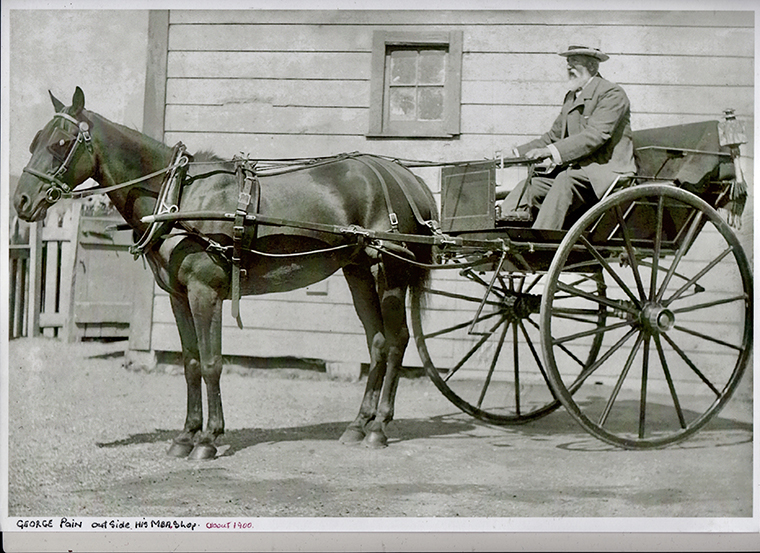At first it seemed it wouldn’t be difficult. We had a typewritten “memoir” about his early life, probably done when he was an old man. Much of what we knew about him was based on this. Both Mate Higginson and Ineke Kershaw had previously brought him to life in the pages of The Star, based on this document.
But the memoir is undated, unsigned and nobody knows who prepared it. And it’s far from complete. Could we flesh it out and give some context to Pain’s own story?
Records are scanty, and there are few photographs from the early years. The Pain family weren’t prominent: their only claim to fame was that his parents arrived at Petone on one of the New Zealand Company’s first ships in 1840. It was not until George was in his late 20s that he enters official records with the purchase of 100 acres, the start of what would become Pain Farm. He had no family of his own, so any personal records have been hard to trace.
Old newspapers were a key source of information, recording in great detail some of the important social activities of the era, such as “Mrs George Pain was recently in Wellington visiting her sister.” To be fair, a trip to Wellington from the Wairarapa then was a major event. It took George three days to walk to the Wairarapa from Johnsonville in search of work. There was a bullock track across the Remutakas in the 1850s, but this side of the ranges was much tougher going through acres of swamp and flax.
Actions speak louder than words, so the exhibition uses what George Pain did to reveal who he was. There is no doubt he was tough – from a very young age his jobs involved hard physical labour. He was ambitious and bold – determined to better himself by moving to the then-faraway Wairarapa where he had no connections or pre-arranged job. We know he was entrepreneurial – the evidence is there in the business that still carries his name: Pain and Kershaw. He was also a risk taker – buying up underperforming farms and stations and turning them around, funded by frighteningly large mortgages. As his wealth grew, so did his generosity. Not only did he leave Pain Farm to the community, he funded many other amenities, as well as supporting individuals such as soldiers returning from the first world war.
We hope you will visit the museum to see George “in person”, thanks to the power of AI and the generosity of John Henderson of Martinborough Technology.
The museum, on the corner of the Square and Oxford Street, is open every Saturday, Sunday and Public Holidays from 10.30am to 2.30pm. During the summer, 26 December to 6 February, it will be open every day.
Admission is free but donations/koha are appreciated: they are the museum’s main source of funds.



